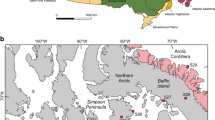Eucalyptus
forest; and in the composition of understorey herbs, sedges, and grasslands. Pollen concentration and charcoal and organic content also exhibit post-European changes. Thus, pollen analysis provides a technique for determining changes in sediment budgets and identifying major vegetation changes in floodplains.
Similar content being viewed by others
Author information
Authors and Affiliations
Rights and permissions
About this article
Cite this article
Kenyon, C., Rutherfurd, I. Preliminary Evidence for Pollen as an Indicator of Recent Floodplain Accumulation Rates and Vegetation Changes: The Barmah-Millewa Forest, SE Australia. Environmental Management 24, 359–367 (1999). https://doi.org/10.1007/s002679900239
Issue Date:
DOI: https://doi.org/10.1007/s002679900239




